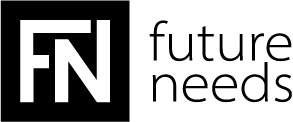Designing for innovation often begins before a product exists.
That was the starting point for Future Needs in the TANGO project, a Horizon Europe initiative developing a data-sharing platform to connect industries through secure, transparent information flows. Before a single line of code was written, Future Needs worked on transforming the idea into something people could see and interact with – through user interface (UI) and user experience (UX) design that balanced clarity with adaptability.
The project: data trust by design
TANGO aims to make Europe’s digital economy more connected and trustworthy. The platform connects sectors such as smart hospitality, retail, and autonomous vehicles, each with its own unique context and regulatory requirements. The project aligns with the European Commission’s data spaces strategy, which seeks interoperable, privacy-preserving information exchange across domains.
Future Needs joined the consortium to lead work on requirements, integration, and UI/UX design. Within Work Package 6, our Head of design Panos Chatzimathios, and the team had to build an experience flexible enough for many pilots without losing visual and functional coherence.
“We had to start from an abstract concept,” says Panos. “Each pilot had different goals, users, and data contexts. Our challenge was to design one interface flexible enough to adapt to all of them.”
The challenge: designing across pilots
Unlike some commercial products built around a single audience, this Horizon Europe project target multiple user groups and involves incomplete technical specifications.
TANGO’s design had to serve different industries and languages while remaining scalable as the project evolved. The team’s task was to visualise how people would interact with a system that was still being engineered. The interface needed to express complex ideas: data governance, privacy, permissions. Accessibility, responsiveness, and compliance with EU data-protection regulations guided every decision.
Trust was the invisible foundation. Users had to feel their identities and choices were handled transparently. Colour, type, and layout were treated as cues for reliability, not decoration.
Panos Chatzimathios, Head of Design at Future Needs, presented our design process – from early sketches to high-fidelity mockups, during the “User Interfaces for Web/Mobile Applications” session at the 6th General Assembly of the Horizon Europe TANGO project.
The approach: from concept to structure
Future Needs translated TANGO’s identity into a modular visual system built to grow with the platform.
“We prioritised hierarchy, simplicity, and reusable components,” Panos explains. “The interface had to stay consistent on both mobile and desktop, and partners needed to extend it easily.”
Design work ran in parallel with the technical build, in collaboration with partners LSTECH and Squaredev. Future Needs acted as the bridge between engineering logic and the user’s point of view, shaping how abstract platform functions, like consent management or trust verification, would appear on screen.
Each cycle of mockups was refined through internal reviews and partner feedback. Figma prototypes helped everyone test flows and content structure long before development started.
“A good mockup is more than a visual reference,” Panos notes. “It’s a conversation tool that helps engineers, policymakers, and designers understand each other.”
Key features: one design, many users
The mockups for mobile and desktop show how a single design language can stretch across use cases.
Collaboration in motion
Throughout TANGO, UI/UX design acted as the project’s common reference point. Teams across disciplines—technical, management, and communication—used the mockups to align their work.
This visual clarity made decisions faster and reduced misinterpretation between design intent and development output.
“UI/UX work in research projects often goes beyond usability,” Panos says. “It helps the consortium see what they’re building. That clarity saves time and improves decision-making.”
Results and impact
By the end of the project, the TANGO mockups had matured into a complete design system ready for development.
Each screen, whether a pilot prototype or the main dashboard, fits within a consistent, trustworthy visual framework. The modular structure means new pilots or features can be added without redesigning the foundation.
The result demonstrates how thoughtful design can turn a research idea into a practical digital tool.
Tips for projects involving product or system design
The TANGO work offers clear guidance for other Horizon Europe initiatives:
- Start visualising early, even before development.
- Early mockups align teams and reveal gaps.
- Build modularly so design scales across pilots and updates.
- Use prototypes as shared language for collaboration.
- Treat clarity as a security feature. When people understand what they see, they trust the system behind it.
“In projects like TANGO, UX isn’t an afterthought,” Panos says. “It connects vision with reality. When you design for research, you’re designing the future.”
Looking ahead
TANGO highlights a wider shift in European innovation: digital platforms only succeed when design makes complex systems understandable and trustworthy. As Horizon Europe projects grow more data-driven, the ability to connect technical precision with human experience will define which solutions last.
Future Needs has refined that connection across multiple Horizon Europe projects, helping consortia turn early research ideas into usable products with clear interfaces, consistent visual systems, and user trust built in from day one.
If your project is entering the design or implementation phase, our UX/UI design team can help you visualise the platform before it’s built, align partners faster, and deliver results that reviewers and end users can navigate intuitively. Contact our Head of Design: panos@futureneeds.eu.









